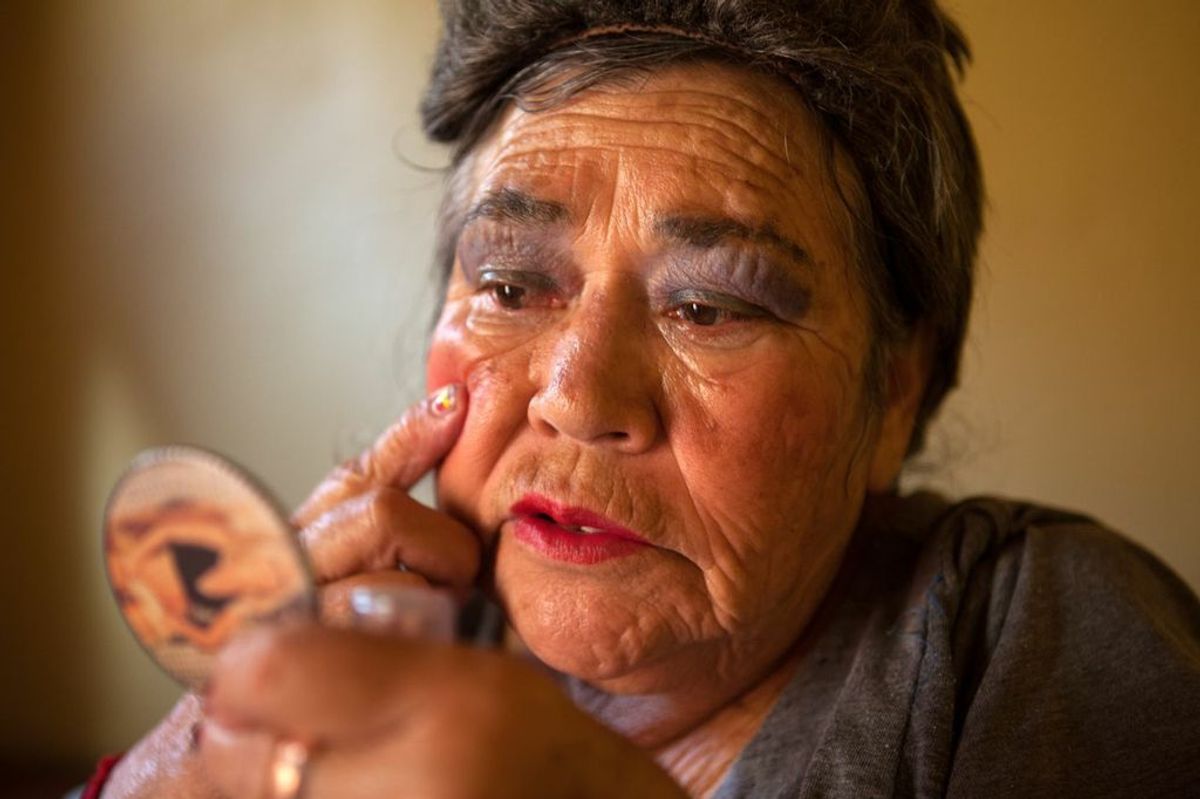Casa Xochiquetzal is a quiet presence in a bustling, run-down neighborhood near Mexico City’s historical center. The 18th-century brick structure, which once housed a boxing museum, stands as a sober contrast to the surrounding visual chaos. Inside, a courtyard opens onto plain but spacious chambers that provide shelter for elderly women. But these residents are not the typical retirees that one finds in a senior care facility.
The women who call Casa Xochiquetzal home are former (and on occasion current) sex workers. They have come to live in the permanent shelter after years of working in by-the-hour fleabag motels and then—as youthful allure faded—sleeping on the streets. For many residents, the house offers their first respite from years of violence, exploitation and economic insecurity.
Carmen Muñoz, a former sex worker, was inspired to open Casa Xochiquetzal one morning when she saw several other women who work the streets sleeping under filthy plastic tarps and cluttered market stalls. It took her 20 years of lobbying the government and NGOs before she won the support necessary to open the shelter. In 2006, after Mexico City’s municipal government provided the building and committed to covering the costs of food for its occupants, Casa Xochiquetzal welcomed its first residents. Today a civil association created by prominent female artists, activists and writers who supported Muñoz’s vision receives public donations to provide the remaining necessities.
Since the house opened eight years ago, more than 250 former sex workers have been given shelter. And a roof over their heads is not all they receive: social workers assist residents in recovering long-lost birth certificates and other forms of identification that Mexico’s dizzying bureaucracy requires for everything from accessing state-sponsored health care and psychological counseling to voting. Casa Xochiquetzal provides a space to age with dignity for a group of vulnerable women who are often invisible to society at large. Its creation has made clear how few people—including the residents themselves—have ever stopped to think about what happens when women in the sex industry grow old.
For the 26 women who live at Casa Xochiquetzal today, house rules are few: there are nightly check-ins, weekly meetings, assigned housekeeping tasks and prohibitions on bringing in either men or drugs. Most importantly, the women must foster a climate of respect for every resident’s past experience. This is not as simple as it sounds. Years on the streets have made these women tough, and they hesitate to soften up. Some knew each other before moving in—not as friends but as rivals hustling for johns. And even now, as they share a roof, friendship is not a given. Vicious arguments and fisticuffs occasionally break out. But most residents come to recognize that it is better to talk things out. As long as they keep the peace and follow the other house rules, the women are free to maintain a small business off-site—say, peddling candy and cigarettes or running a used-clothing stall—and can even continue “selling love,” tough or tender, as they choose.
Casa Xochiquetzal residents have few possessions. And whatever they have, they hang on to, whether insignificant objects or everyday habits: Raquel piles up discarded bottles to redeem them for small change; Conchita lets her imagination soar through hours of fanciful embroidery; Sonia reads pulpy cowboy comic books in defiance of the world (she has preferred to be alone ever since a gunshot wound she received when she was raped at age 13 left the entire right side of her body paralyzed). Sonia just started shilling candy on the streets, like her friend Canela, since she’s “not getting any anymore,” but other women at the house carry on with their accustomed trade. Norma, for one, likes to revisit “the office,” a run-down plaza frequented by working girls and their johns, where everyone still remembers her. Meanwhile María Isabel holds on to the poetry she writes, filling dozens of notebooks.
At this late stage of life, the women’s dreams are modest: to reconcile with estranged children and prepare to pass on peacefully. Yet as they take things day by day, the women remain imaginative, funny and a fount of wry street wisdom. And ultimately they have escaped a fate that they once feared—dying on the streets, anonymous, only to be buried in an unmarked grave—to age in comfort among other women who were once haunted by the likelihood of such a frightful vision coming to pass.
The result of six years of in-depth photojournalism, Bénédicte Désrus and Celia Gómez Ramos's new book, Las amorosas más bravas ("The Toughest Lovers"), presents intimate portraits of the women residing at Casa Xochiquetzal.
All the photographs in this series were taken by Bénédicte Désrus and depict residents of Mexico City’s Casa Xochiquetzal. The captions are excerpted from Celia Gómez Ramos’s text in Las amorosas más bravas, co-authored with Désrus.
[slide_show id=13656434]

Shares